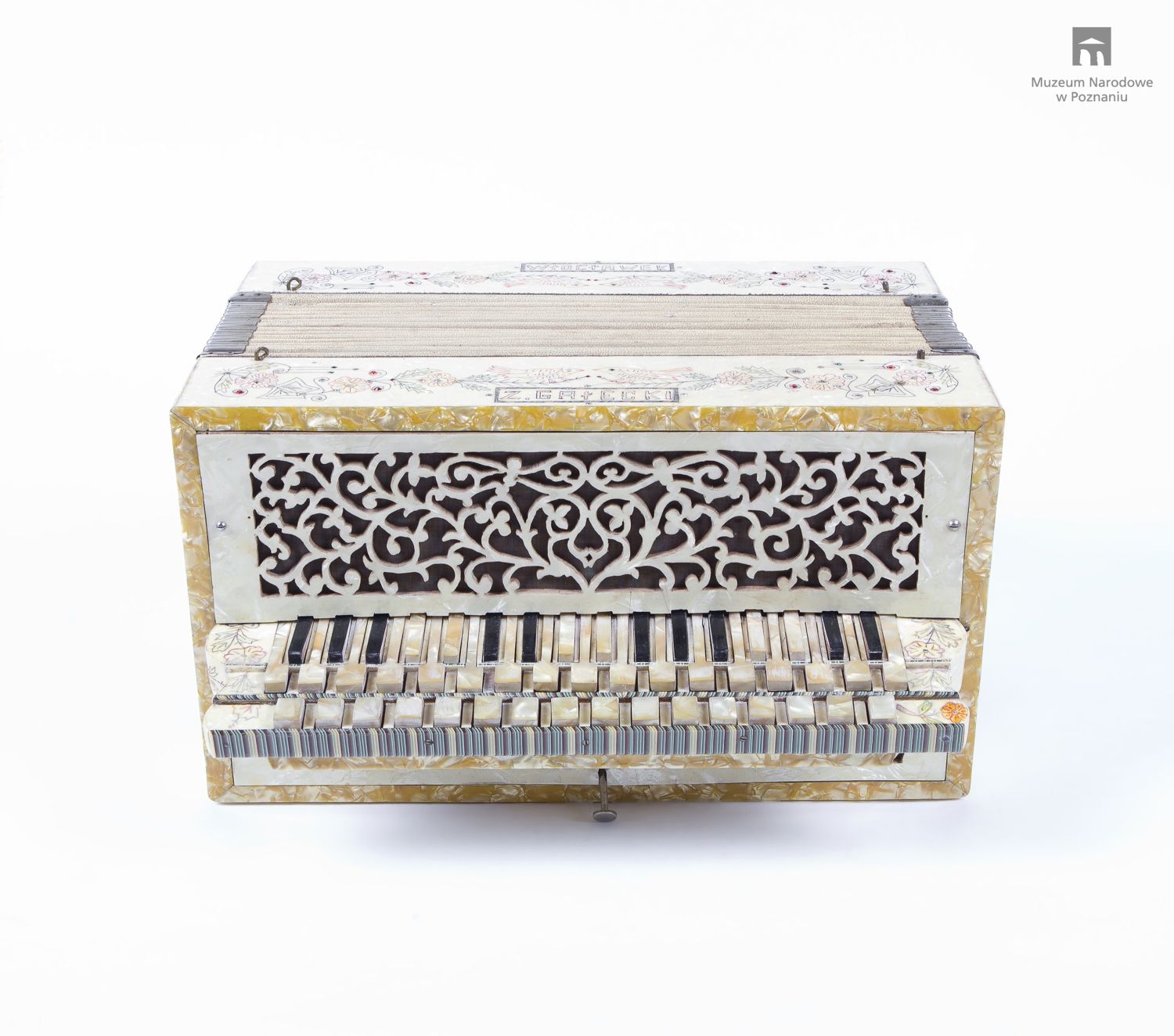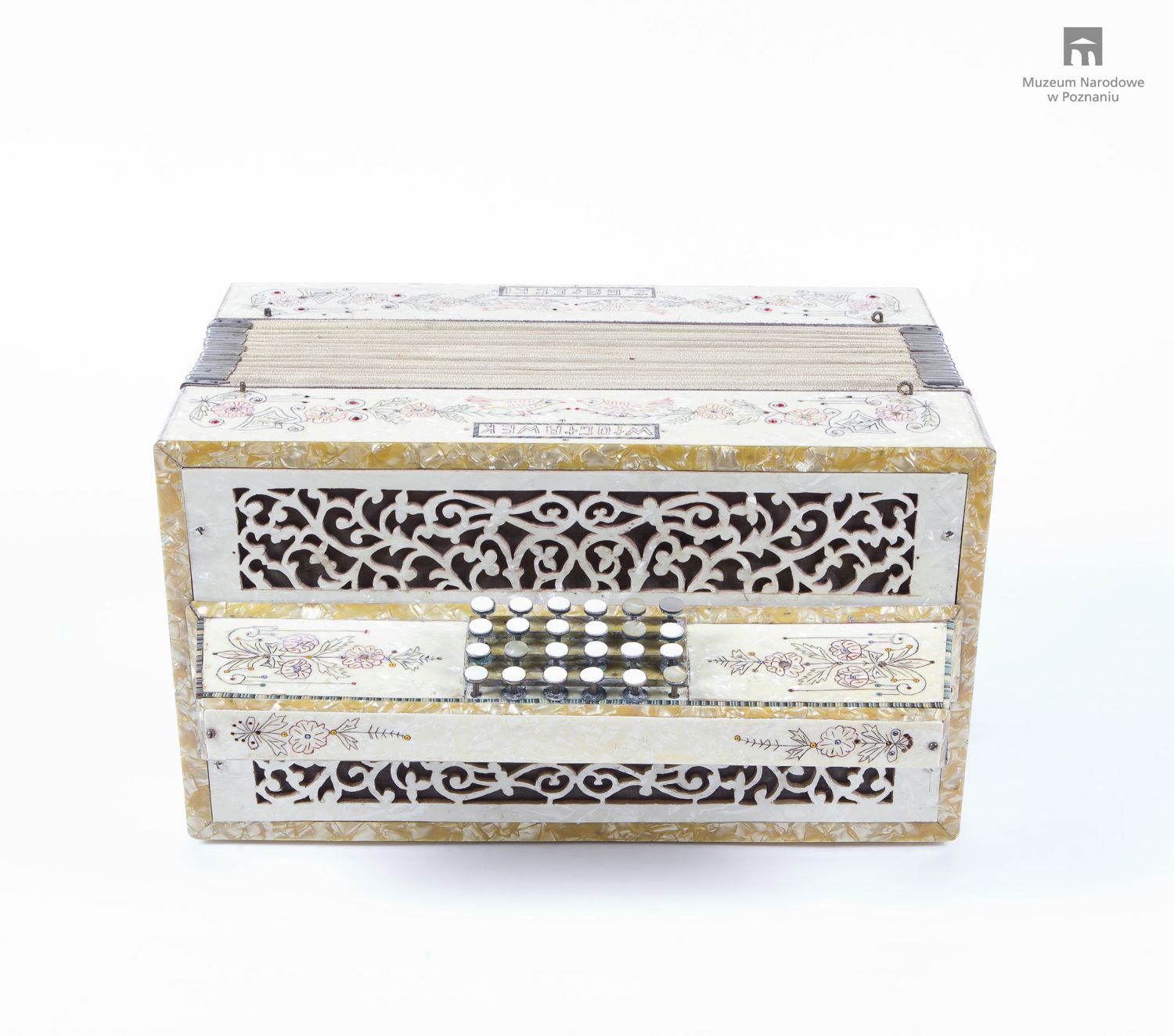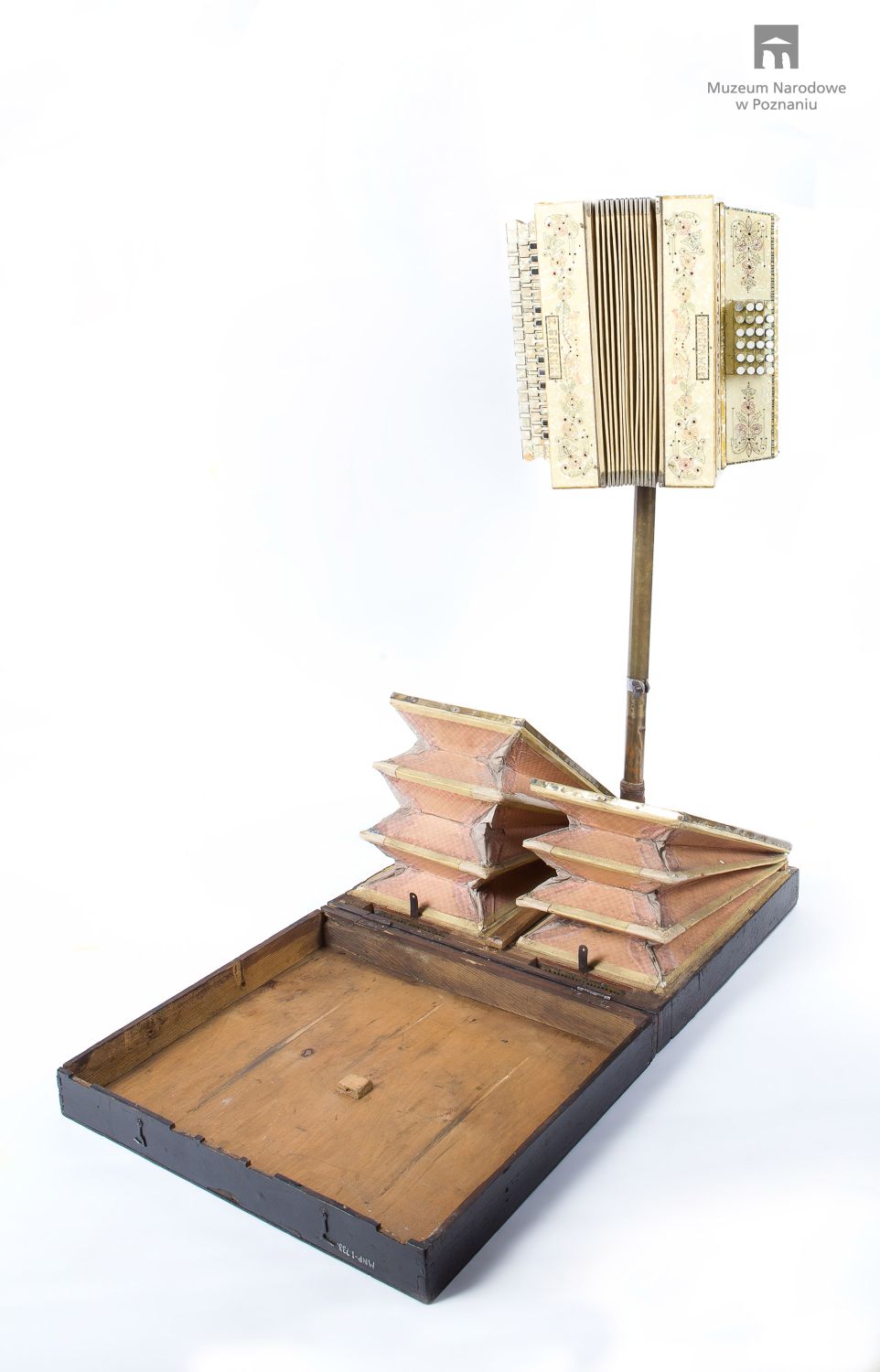pedal accordion
pedal accordion
Local name: pedałówkaClassification: 4 Aerofony / 41 Aerofony wolne / 412 Aerofony wolne interrupcyjne / 412.1 Aerofony idiofoniczne interrupcyjne lub stroikowe / 412.13 Stroiki przelotowe / 412.132 Zestawy stroików przelotowych / 412.132-62-8 Zestawy stroików przelotowych z elastycznym zbiornikiem powietrza, z klawiaturą
Maker: Gałecki Z.
Date: 1920s - 1930s
Region: Kuyavia
Country: Polska
Owner: Musical Instrument Museum, department of the National Museum in Poznań
Inventory number: MNP I 733
Description: a pedal accordion; called "white"; chromatic; three-row keyboard with 16+17+16 keys, 24 basses (buttons); bellows connected with pedals through a pipe
Decoration: body embellished with engraved and colored floral and zoomorphic motives
Inscriptions: Z. GAŁECKI / WŁOCŁAWEK
Sound compass, tuning: different scales depending on the type and specimen; usually the melody keyboard is arranged in minor-third rows composing the chromatic scale B♭ – b♭''', while the bass side is arranged in the chromatic scale C – b, which made it possible to get all major triads
Performance practice: after World War I the accordion became a popular component of folk bands (together with the violin and the drum); the pedal variety being especially popular in Mazovia on the right side of the Vistula river (the areas of Kurpie and Garwolin), to some degree also in Podlasie (Podlachia)
Catalog card by: Janusz Jaskulski / Zbigniew J. Przerembski
A Dance Game; The Band of Kowal: Józef Krzakowski (b. 1922), violin, Jan Ambrożewicz (b. 1910), violin, Józef Pietrzak (b. 1921), tree-row accordion, Marian Czula (b. 1923), double bass; rec. Kazimierz 1987; Sources of Polish Folk Music
<< Back














